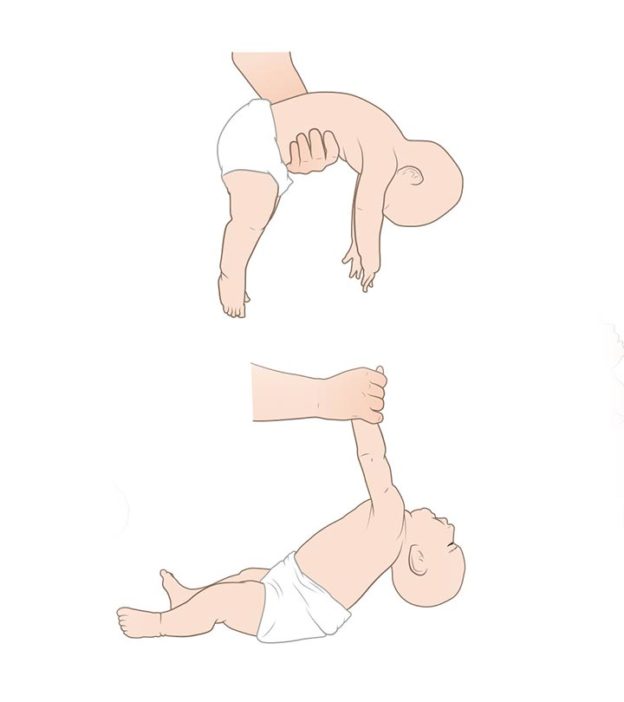
Floppy baby syndrome is a condition seen in babies where the body and joints have a reduced amount of resistance towards passive movement due to decreased muscle tone. This condition is also known as the ‘Floppy Infant Syndrome’ (FIS) and could be a symptom of serious underlying disorders, which could lead to developmental problems in the future(1).
The reason why the floppy baby syndrome is referred to as such is due to the ‘floppy’ appearance of the arms, elbows, head position, knees, etc. in a child suffering from it. For instance, when a baby’s arm is flexed, it returns to its normal position quite easily, which signifies normal muscle tone, however, if the baby has the floppy baby syndrome, then the straightening of the arm could take some time as a result of the decreased muscle tone(2).
Following are some other symptoms associated with this condition:
- Baby has trouble keeping head straight; head keeps tilting on one side.
- Milestones such as being able to sit up, stand, walk, and crawl are significantly delayed.
- Frequent joint dislocation in the jaw, hips, etc.
- Soft and underdeveloped muscles.
- Baby can’t be picked up by placing hands under his or her shoulders.
- Baby experiences difficulty coughing and swallowing.
These symptoms can manifest themselves in a baby suffering from the condition between 6-12 months. An accurately conclusive diagnosis, however, requires a doctor to go through a series of physical checks, diagnostic tests, and a cursory study of the child and family’s medical history.
There are several tests that a doctor can typically take to diagnose the condition and to determine the underlying causes, some of them include blood tests, CT Scans, CK (creatine kinase) test, spinal tap analysis, muscle biopsy, MRI test, etc.(3).
The floppy baby syndrome can be caused due to a wide variety of congenital as well as acquired (peripheral) medical conditions(4). Some of the most common causes are as follows:
- Down syndrome.
- Cerebral palsy.
- Myasthenia gravis syndrome.
- Prader-Willi syndrome.
- Cerebellar ataxia.
- Muscular dystrophy.
- Brain injury.
没有单一的治疗婴儿syndro软盘me, as the treatment for it generally depends on the underlying condition, which it is the symptom of. It is important to ensure that the doctors establish a complete clinical profile of the condition before attempting a treatment, considering the wide range of causes that could be behind it(5).
Physical therapy is sometimes sought in infants with the floppy baby syndrome to stimulate the development of muscle tone(6). The syndrome in itself is a symptom of a host of possible diseases, and the treatment thus largely depends on the diagnosis.
If you suspect that your child has the floppy baby syndrome, it is important to rush to the doctor as early as possible for a complete diagnosis. Even though the syndrome could be a reflection of some very serious medical conditions, early diagnosis and intervention have been proven to be the most effective ways to assist in a complete recovery(7).
If you’re still pregnant and would like to avoid the incidence of floppy baby syndrome in your child, please make sure that any medication that you might be taking is approved by your doctor, keeping the condition in mind. Drugs that affect the central nervous system (CNS), such as benzodiazepines, are said to be correlated with the incidence of floppy baby syndrome(8).
The floppy baby syndrome is often said to be a life-long condition(9). However, with timely intervention, diagnosis, and treatment, it’s possible that babies can eventually recover enough to live fairly normal lives with minimal difficulties(10).













